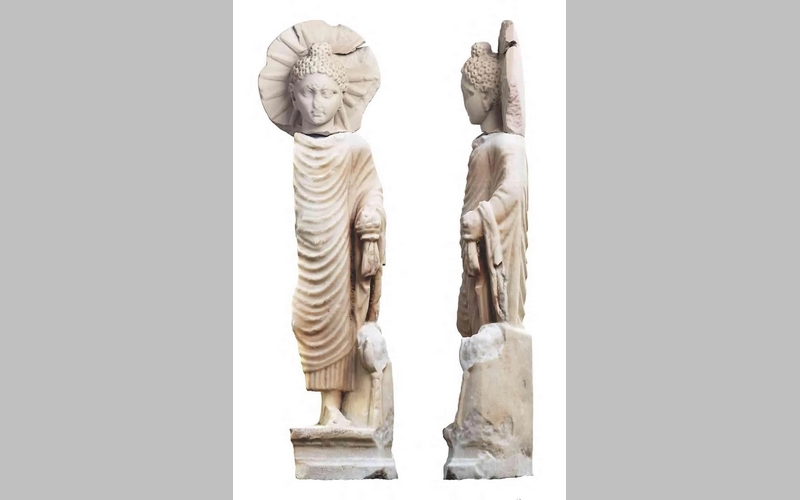
When the Ancient Egyptians were still leaving offerings to Amun in their temples, a faith from more than 4,000 miles away was already turning up at the docks of the Pharaohs.
A 28-inch long (71-centimeter) statue of Gautama Buddha was found in excavations of the Egyptian port of Berenice on the Red Sea, dating back to the Roman Era.
Evidently, ships laden with goods from India and offshore islands were, even at this early stage of history, already capable of crossing the Indian Ocean routinely on trading missions, bringing spices, jewels, and religion with them.
A Polish-U.S. archaeological mission discovered the statue “dating back to the Roman era while digging at the ancient temple in Berenice.”
The find holds “important indications over the presence of trade ties between Egypt and India during the Roman era”, the head of Egypt’s supreme antiquities council Mostafa al-Waziri said.
The statue depicts Buddha with a halo around his head and holding a lotus flower in his hand.
Known as the Maritime Silk Road, the shipping lanes of the Indian Ocean were plied for thousands of years, connecting the wealth of China to that of India and the Spice Islands, back to the Arab World and North Africa, through to Constantinople and Europe beyond.
GNN has previously highlighted the incredible complexity of global trade even in the earliest periods of civilization.
MORE ARCHAEOLOGICAL NEWS: Archaeologists Uncover ‘Complete Roman City’ From 1,800 Years Ago in Luxor–Including Pigeon Towers
Last year, cutting-edge analysis of tin isotopes has shown that tiny tribes of pastoral nomads from modern-day Uzbekistan supplied a third of all the precious tin needed to make the bronze that fueled ancient Mediterranean commerce.
Getting the tin from Uzbekistan to the Med involved a vast multi-regional, multi-vector trade network that bears comparison with our own time—3,500 years after it was developed.
SHARE This Interesting History Lesson With Your Friends…



















